After a couple of days of this leisurely walk around Larnaca, we decided to start moving and the first destination of our choice was Ayia Napa or Agia Napa. Practically both names function in parallel, although I presume Agia Napa would be more correct in Greek, but ever since my first visit to the island the other version has remained stuck in my head. We caught an inter-city coach at a terminal in the centre of Larnaca, right at the walking area by the sea. As we approached Ayia Napa, the soil in the fields that could be seen from the coach turned into very distinct red, in other words, it was the terra rossa type of soil. It is one of the specificities of this area and it renders very good base for the production of potatoes. Ayia Napa itself used to be a small fishermen’s village and then with the general development of tourism someone decided to turn the village into a tourist place. And so it was done. Today, it mostly consists of a large number of hotels, restaurants, cafes, night clubs and everything else that is provided to contemporary tourists.
Still, where we got off the coach, there is a wonderful monastery and we immediately went to see it. The monastery is dedicated to Our Lady of the Forests and it is surrounded by high stone walls. In front of its south entrance, there is a huge sycamore tree which is said to be 600 years old. Regardless of its age, it is a truly impressive tree that provides a good shade. The monastery church originates from the 16th century and it is very interesting. From the outside, it appears as churches usually do, but its interior is partially underground, has an irregular ground plan and extends from a natural rock that exists there. The yard is stunning and as this was a day in the low tourist season, everything appeared serene and harmonious, as it should. Why do I emphasize this? Well, because right around the small square at the north entrance into the monastery there is a large number of cafes and night clubs. I can only imagine what it all looks like in the middle of a high season. The strength of dedication of the monks who live here must be very great indeed.
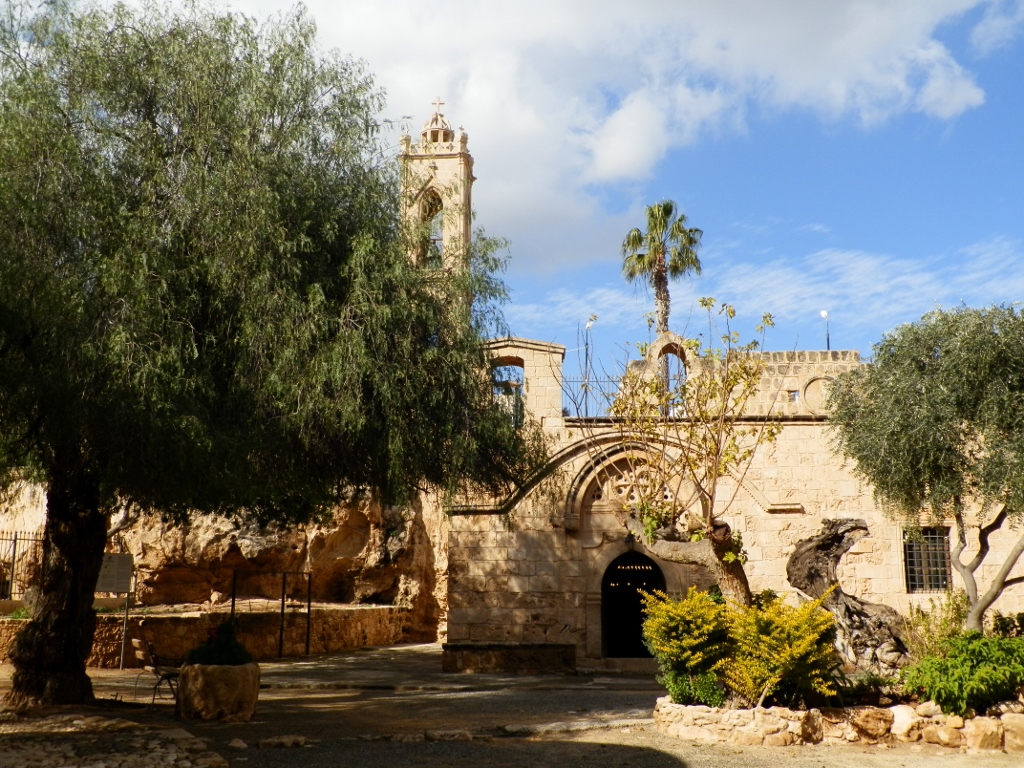 Ayia Napa, Monastery, the yard and the church
Ayia Napa, Monastery, the yard and the church
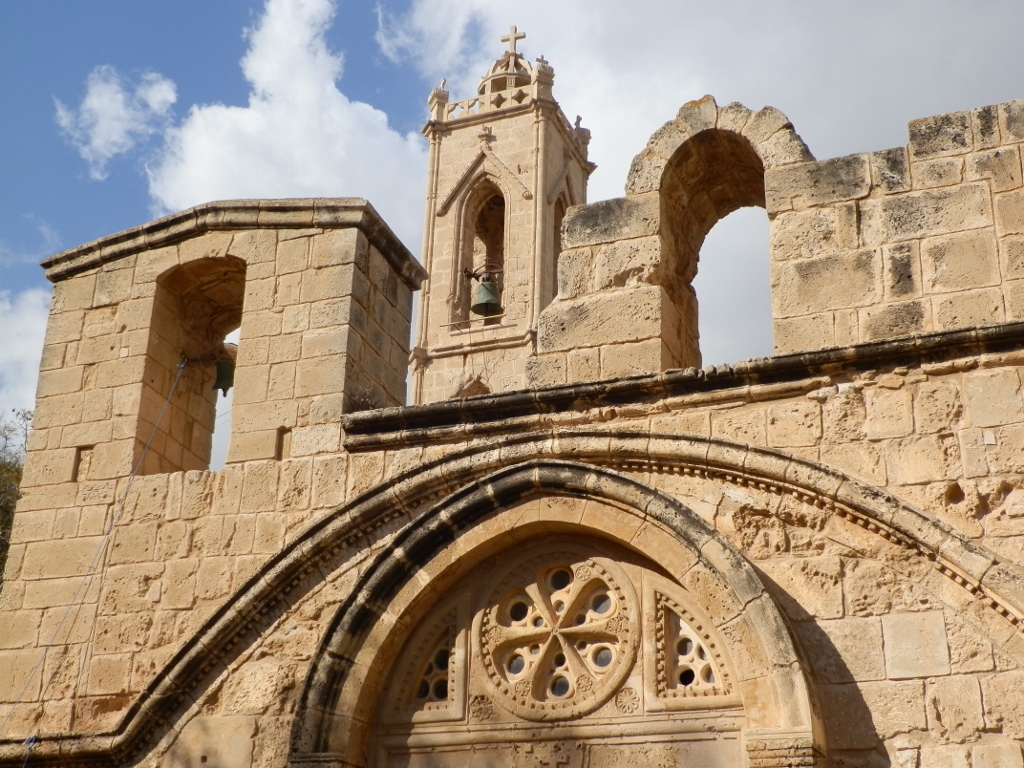 Ayia Napa, Monastery, the front of the church and the belfry
Ayia Napa, Monastery, the front of the church and the belfry
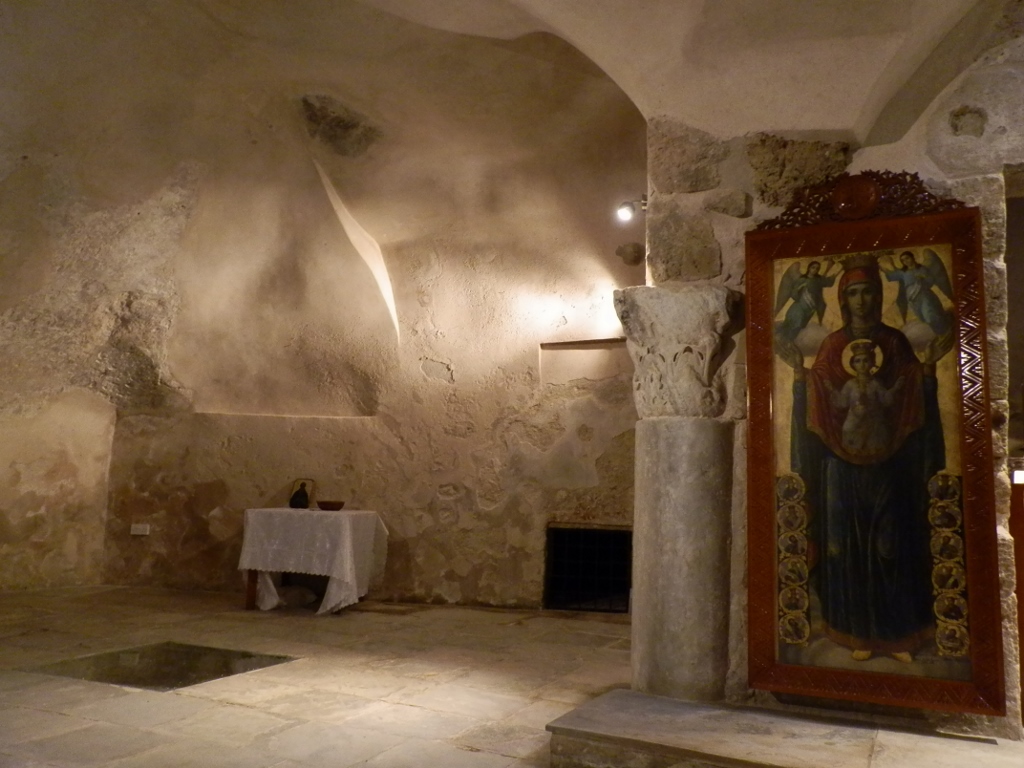 Ayia Napa, Monastery, the church’s interior
Ayia Napa, Monastery, the church’s interior
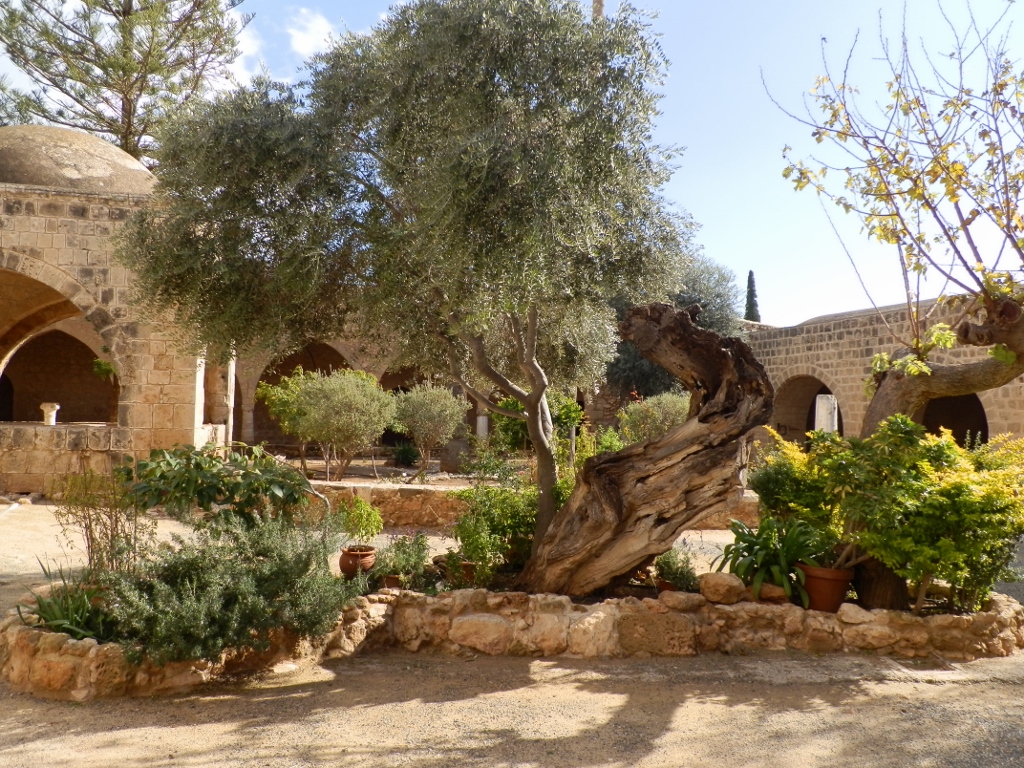 Ayia Napa, Monastery, an olive tree in the yard
Ayia Napa, Monastery, an olive tree in the yard
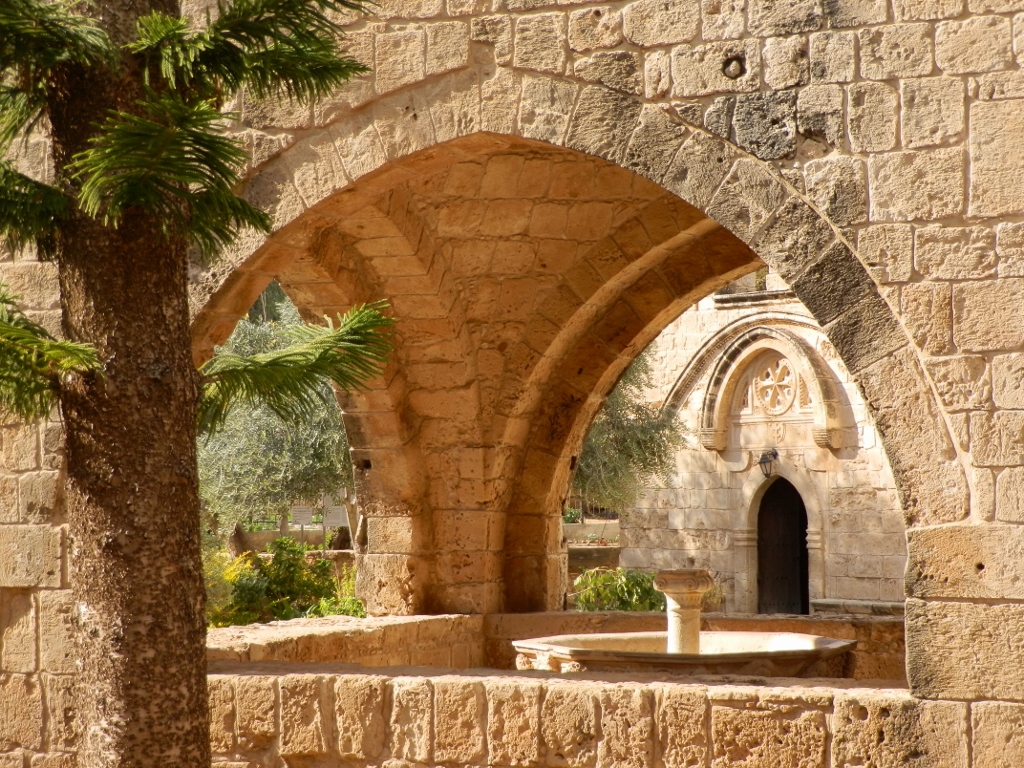 Ayia Napa, Monastery, a detail from the yard
Ayia Napa, Monastery, a detail from the yard
Following our visit to the monastery, we headed in the direction that led us out of Ayia Napa, but towards the coast. In order to get where we were going, we passed through urban parts of the place. Ayia Napa seemed like a ghost town. We didn’t meet almost anybody and the only people in fact whom we more or less regularly passed were workers who were engaged in renovation or repair of numerous hotels between which ran the street we were on.
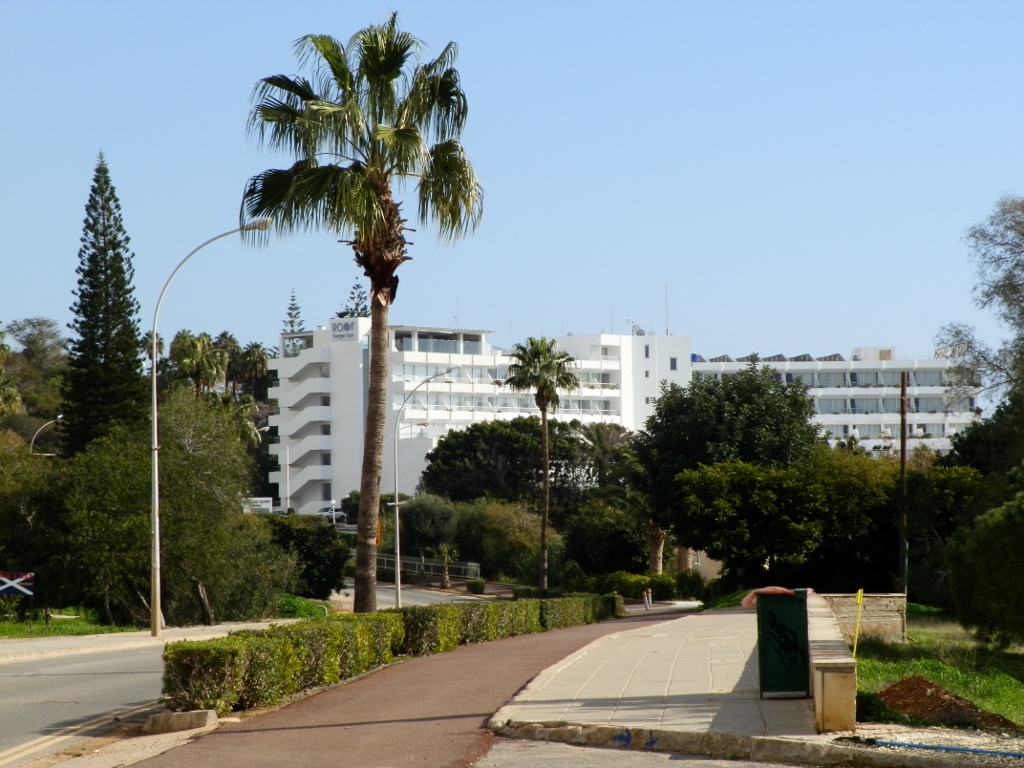 Ayia Napa, a tourist place during low season
Ayia Napa, a tourist place during low season
After a while, we left the town and headed along a paved path that stretched by the sea. The path is rather long, a few kilometres, and it leads in the direction of Cape Gkreko. We went this way with a desire to reach the National Forest Park “Kavo Gkreko.” Frankly speaking, we actually wanted to go even farther than that, but we didn’t manage in the end as we were in no hurry, but rather walked leisurely enjoying the sunny day and the stroll by the sea.
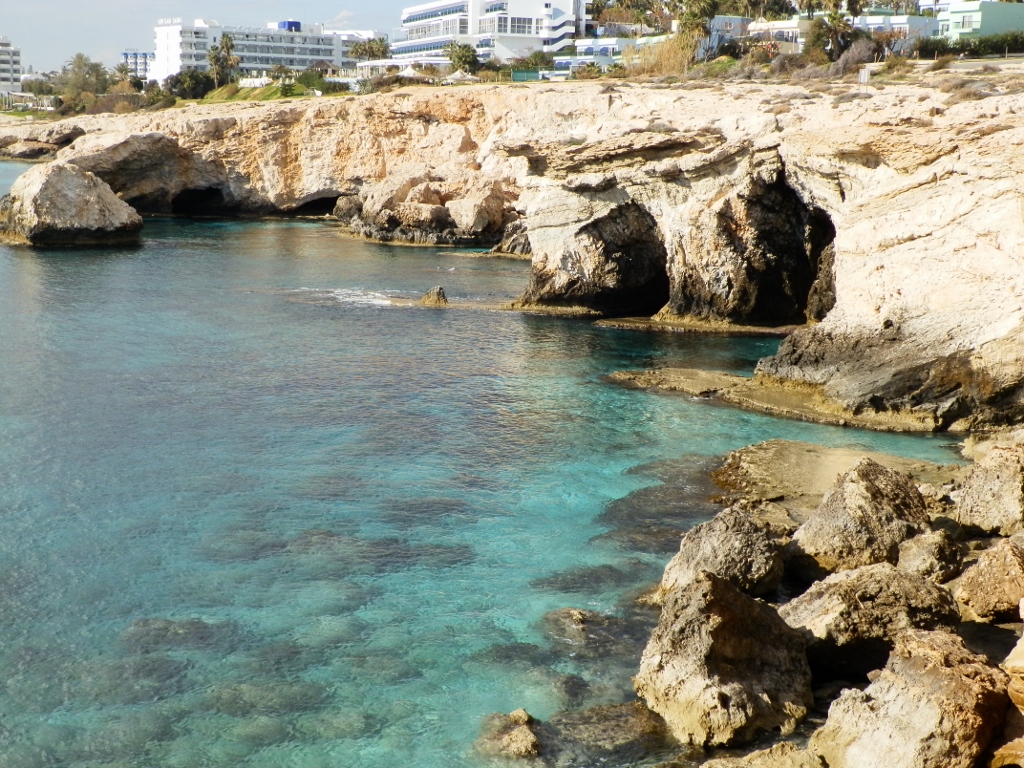 Ayia Napa, there are numerous rocky coves and caves along the shores near Ayia Napa
Ayia Napa, there are numerous rocky coves and caves along the shores near Ayia Napa
I truly enjoyed the walk by the sea. Going along the path reminded me of the yellow brick road, although the landscapes were quite different from those in Oz. The surroundings were mostly dry, the coast was mostly rocky, but we also came across a couple of sand beaches of different sizes. Near those beaches there were usually some tourist villas or restaurants, but it was all closed and mostly empty. In one spot, opposite some modern buildings which I presume are rented as apartments to tourists during high season, there was even a man-made sand beach, for it was quite evident that some machinery had been employed there and that the beach was not natural.
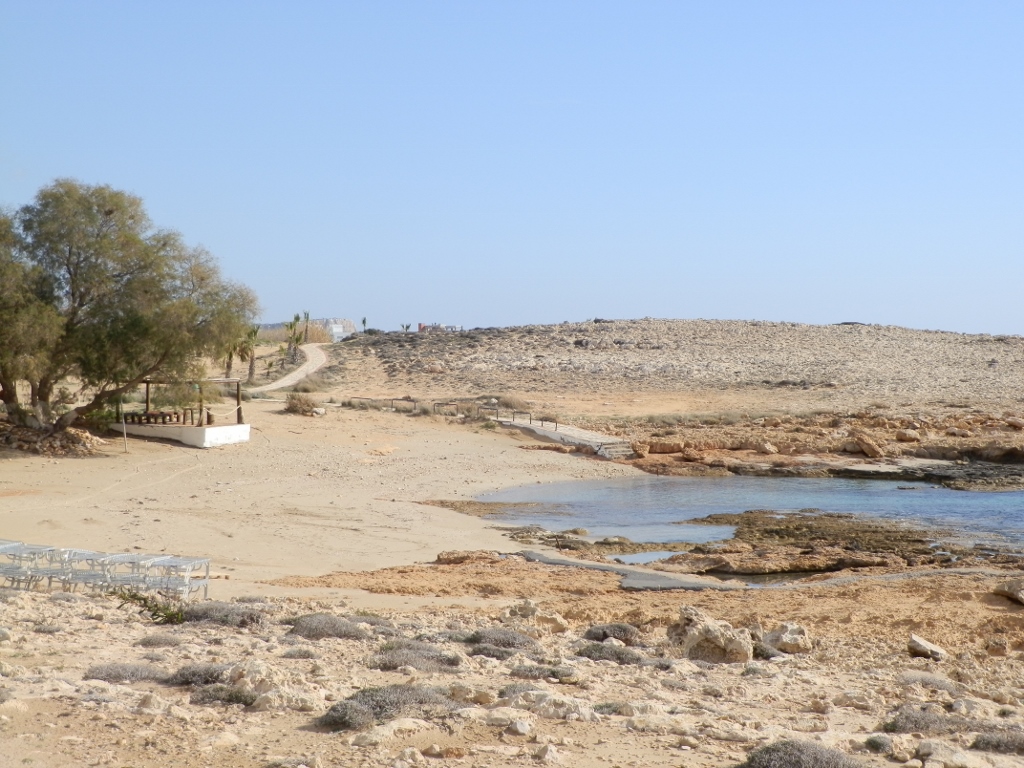 Ayia Napa, the Ammos Tou Kampouri beach
Ayia Napa, the Ammos Tou Kampouri beach
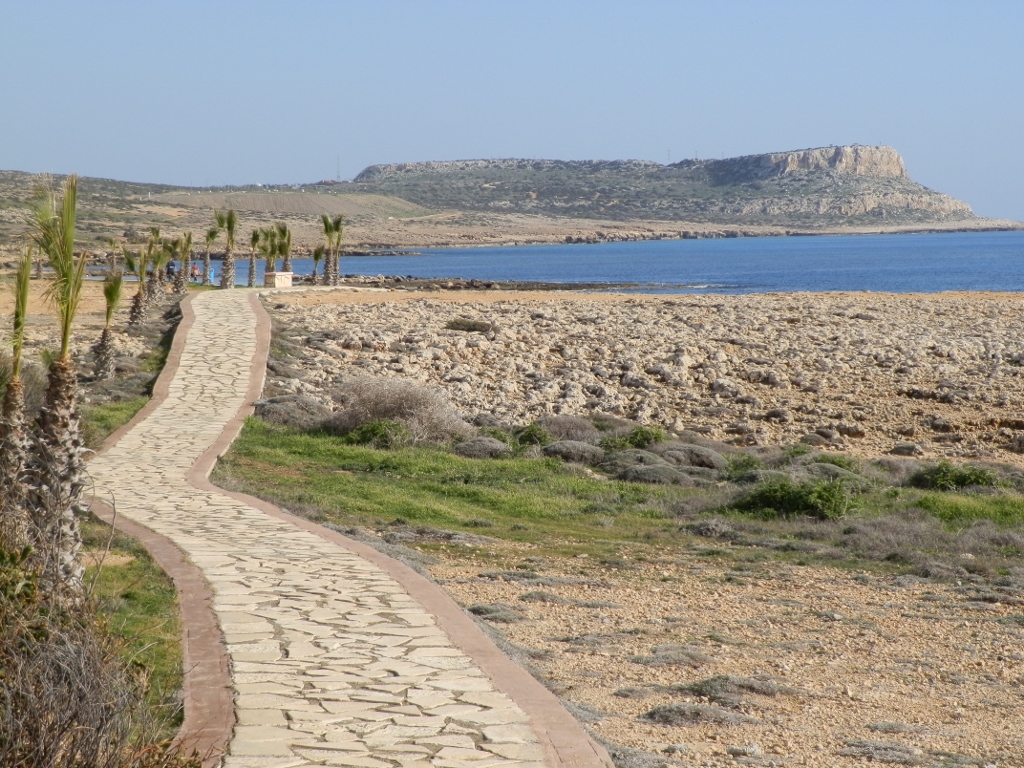 Ayia Napa, the path leading towards the Limnara beach; in the distance there is the National Forest Park Kavo Gkreko
Ayia Napa, the path leading towards the Limnara beach; in the distance there is the National Forest Park Kavo Gkreko
The biggest beach in this section is the Limnara beach. There was nobody swimming here in January, although there were some people, but they in fact worked on the construction renovation of the beach restaurant as a part of the preparations for the season ahead. At this point we were quite ready for a coffee break, but there was nothing open, so we just kept on walking.
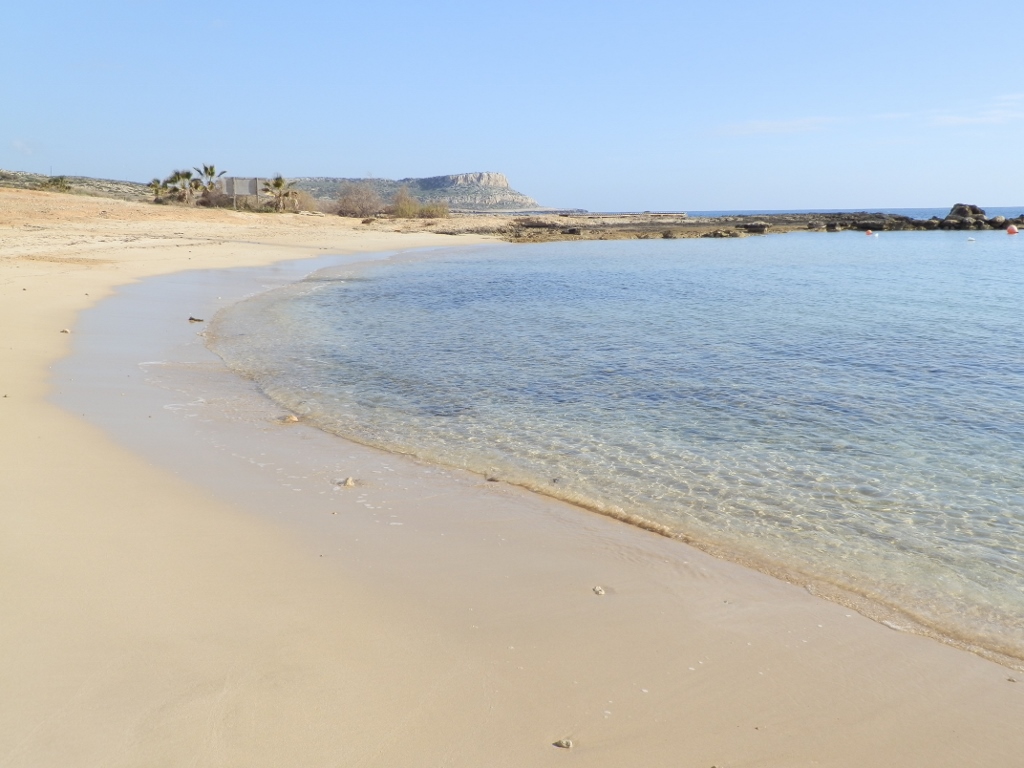 Ayia Napa, the Limnara beach
Ayia Napa, the Limnara beach
Soon after the Limnara beach the path ended and there we had a section where we walked over sharp stones and low rocks. We had ordinary walking shoes on, not hiking boots, so we were worried about twisting an ankle, but it all went well in the end.
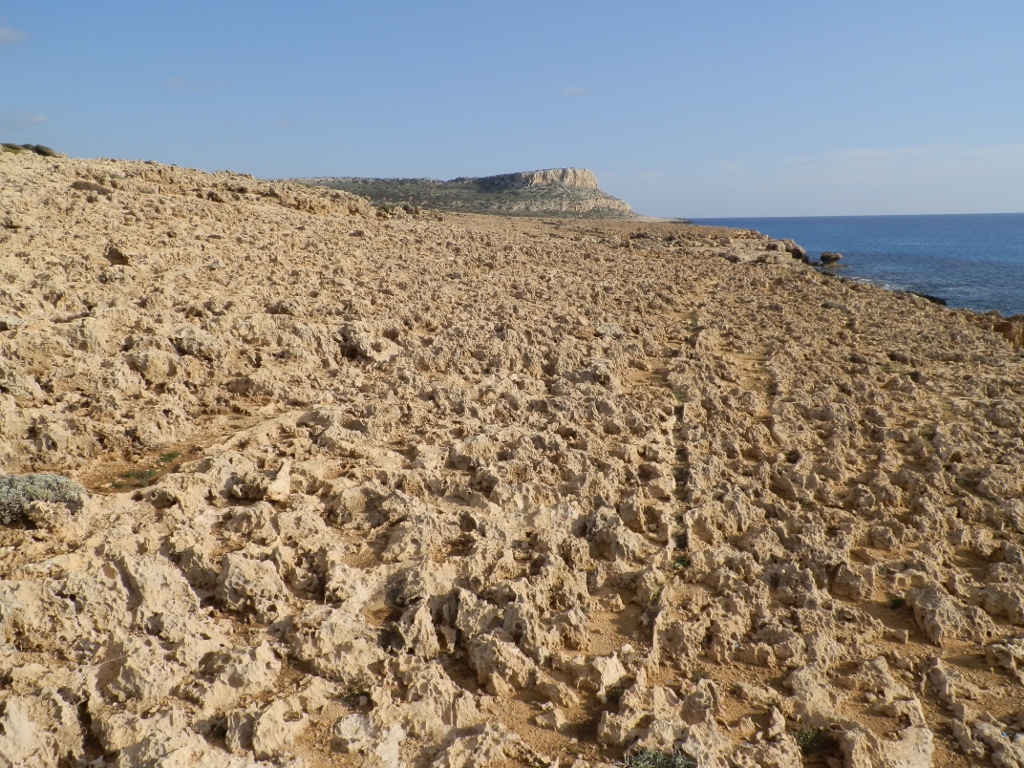 Ayia Napa, the rocky patch we had to cover
Ayia Napa, the rocky patch we had to cover
And not only that it went well, but it was really worth it. We came across a viewpoint with majestic cliffs carved by erosion and the sea which in few places had a beautiful turquoise colour due to the reflection of the sand in that part. There were also a couple of benches, so we could make a nice little break and I truly enjoyed the view.
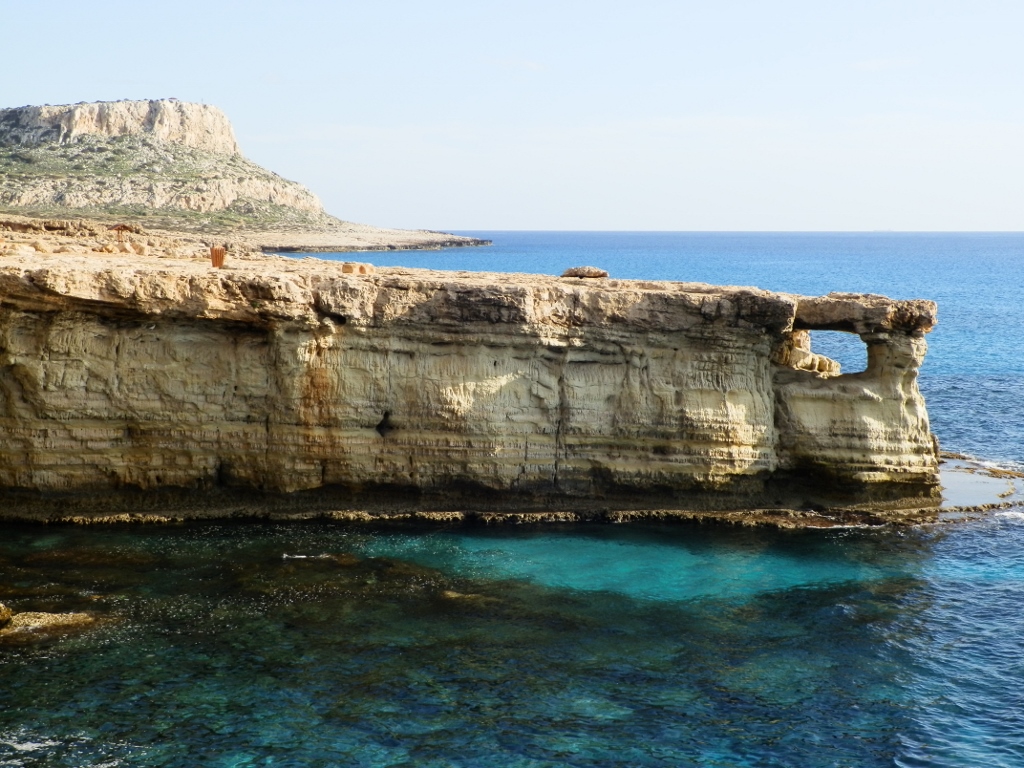 Ayia Napa, the Palatia sea caves
Ayia Napa, the Palatia sea caves
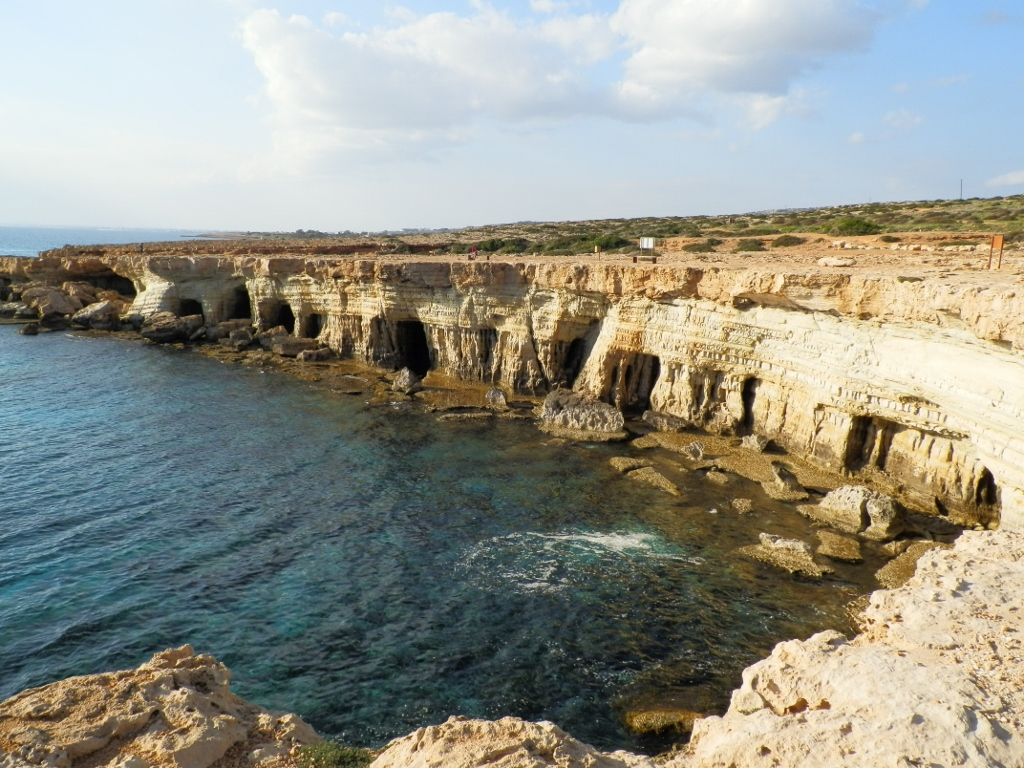 Ayia Napa, the Palatia sea caves
Ayia Napa, the Palatia sea caves
Following this short break, we moved on, reached an asphalt road and headed towards the National Forest Park. And we came there, but there were no information boards and we didn’t know where exactly we were and which way to go, while the day was getting close to its end, so we weren’t ready to get into nature following some random walking paths in order not to get lost or get too much off the road for we had to go back. For this reason we decided to give up further hiking and to start heading back towards Ayia Napa with the hope that we’d manage to get some kind of transportation. Along the way we also passed a very interesting tree that grows some ten metres off the road. We saw some local people sitting on the benches arranged around the tree and when we approach it we noticed there were a lot of tied bows. It’s probably some magical tree that grants wishes or at least that’s its reputation. We sat down on one of those benches and as we started to talk about what to do next, we saw a local bus coming our way, so we ran quickly to the road. There was no stop there, but the driver kindly halted and thus we got to Ayia Napa where soon after we also caught a coach to Larnaca.
The next on our sightseeing list was Nicosia, the capital of Cyprus. When one goes to Nicosia, either by car or by coach, it is important to bear in mind that two names are used – both Nicosia and Lefkosia, which in fact is the Greek name. The aim of our visit was to do the sightseeing of the old part of the city. It was quite sunny that day and yet it was rather cold because the streets are narrow and the sunrays cannot penetrate well and heat up the space between buildings. That is certainly ideal during summer when it is very hot, but during winter it may be problematic for some of us who craved warmth. Still, we solved the “problem” by making frequent breaks at cafes that had heaters and then we could get warm.
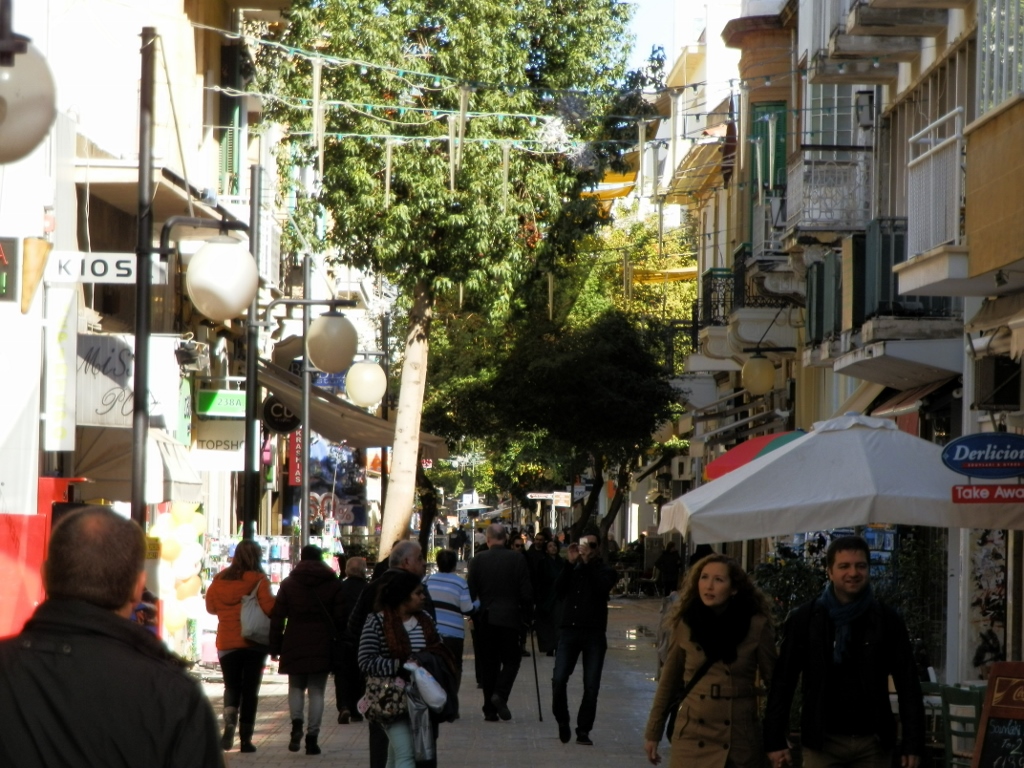 Nicosia, the pedestrian street
Nicosia, the pedestrian street
First we went along the pedestrian street and thus we came to the border crossing, that is, to the demarcation line between the Republic of Cyprus and the Turkish Republic of North Cyprus. It was then that we realized the border crossing was open and that it had not even occurred to us to take our passports for the day. Because of this we agreed to come back to Nicosia again in order to go to the Turkish side and have a coffee there. This whole coffee thing had turned into a serious habit by then. I generally take only one cup a day, but here it has turned into a symbol of relaxation and breaks.
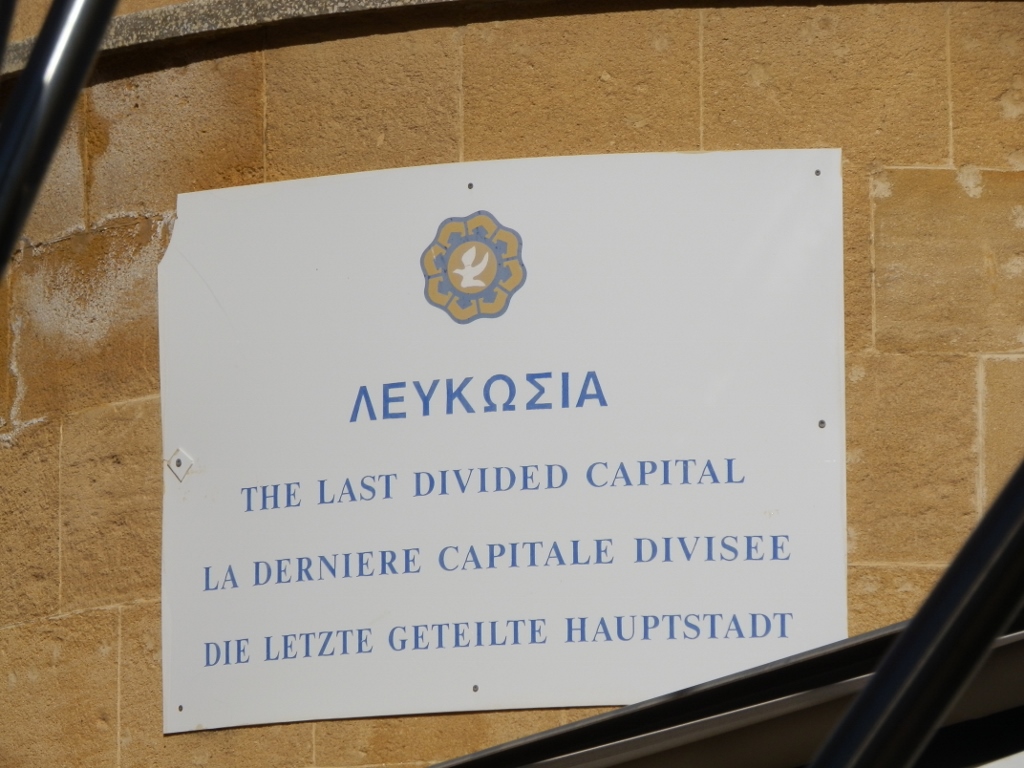 Nicosia, a notice board near the border crossing
Nicosia, a notice board near the border crossing
Then we started to zigzag through the streets, but generally eastbound in order to get to the Famagusta Gate. This gate is one of three that the old part of Nicosia may be entered through. Namely, that central part of the city is surrounded by thick walls built by Venetians. During our walk we came across some very beautiful houses, while some others were a little decayed, but we also passed a large wire gate that fenced off a completely demolished part of the city where today there is probably a narrow space of the no man’s land. The turbulent history of Cyprus and the disagreements that existed between the Greek and the Turkish populations reached their peak in 1974 when Turkey invaded the north part of the island with an explanation that it was done in order to protect the Turkish population in Cyprus and when this happened there was an armed conflict that lasted for a few weeks. Since then, the island has been divided and that is perhaps the most visible right here in Nicosia. As one passes through some parts on the Greek side, it is easy to notice the high minarets of the Selimiye mosque that is located in the Turkish part of the city.
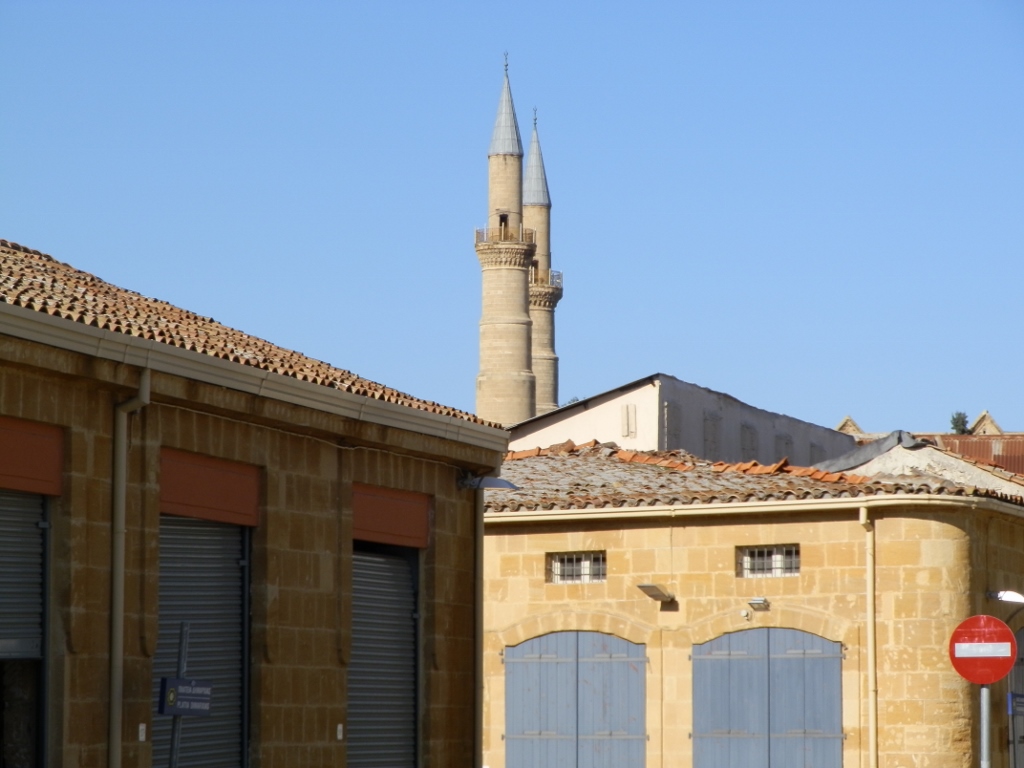 Nicosia, houses on the Greek side and the minarets of the Selimiye mosque on the Turkish side
Nicosia, houses on the Greek side and the minarets of the Selimiye mosque on the Turkish side
Afterwards we also went to the 17th-century St. John’s Cathedral and this whole area is very pretty. Right next to the cathedral there are the Ethnographic and the Byzantine museums, and there is also the seat of the Archbishopric nearby.
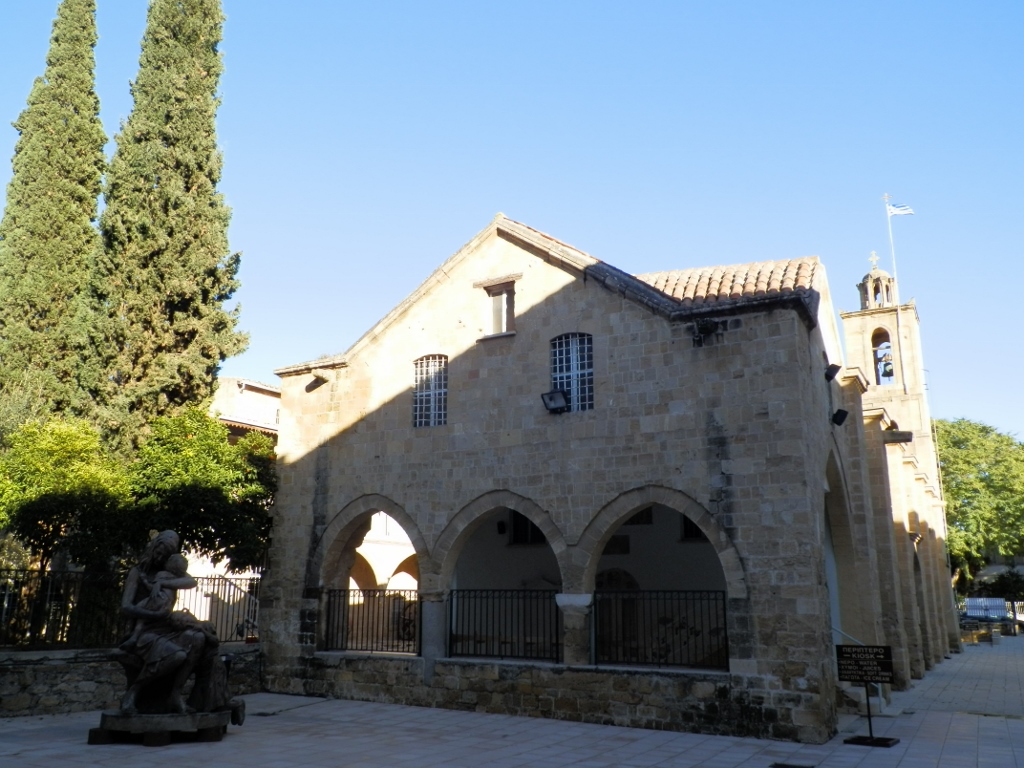 Nicosia, St. John’s Cathedral
Nicosia, St. John’s Cathedral
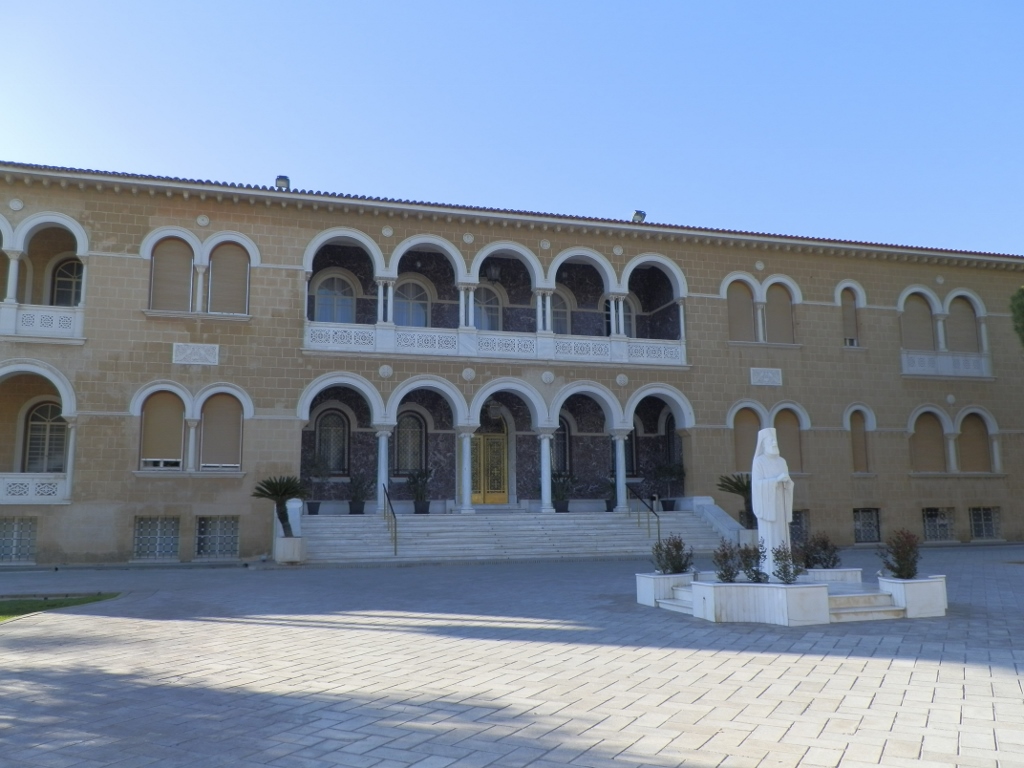 Nicosia, seat of the Archbishopric of Cyprus
Nicosia, seat of the Archbishopric of Cyprus
Not far from this part of the city, we came across a cute little square with the Omeriye hamman and there we saw a lovely cafe lit by the afternoon sun, but by this time we had already had too many coffees and were in no mood for a break. Instead, we returned to the pedestrian zone and then left the walled part of the city and went to the Cyprus Museum.
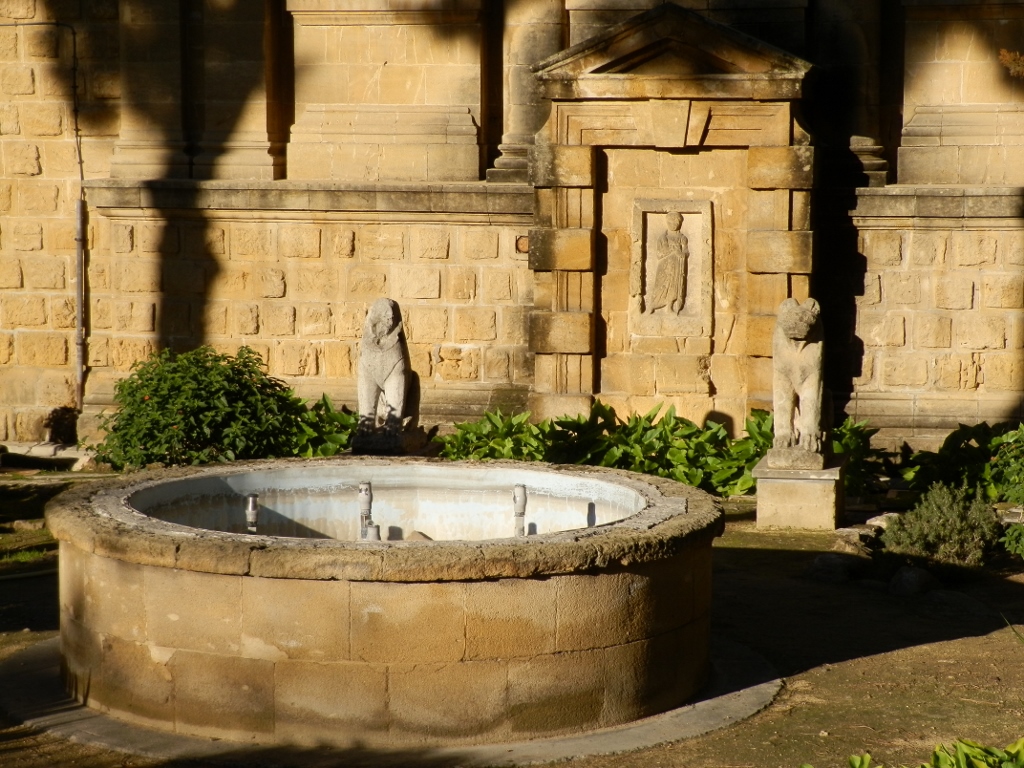 Nicosia, the grounds of the Cyprus Museum
Nicosia, the grounds of the Cyprus Museum
It is the main and the biggest museum in Cyprus, but primarily it is a very nice museum, with beautiful exhibits that have been discovered in numerous sites throughout the island. The museum was built in the first half of the 20th century when Cyprus was still a British colony. Moreover, Cyprus was a British colony until 1960 and today this is a somewhat unusual combination of the Greek and the British. The Cypriots speak Greek, although I’ve read somewhere that this is a dialect that is quite different from the ones spoken in Greece, the main religion is the Greek Orthodox, they always vote for Greece in the Eurovision Song Contest, but they drive on the left-hand side and have a lot of roundabouts.
After the visit to the museum and enjoying the artefacts exhibited there, we walked for a little while more and then we returned to Larnaca.